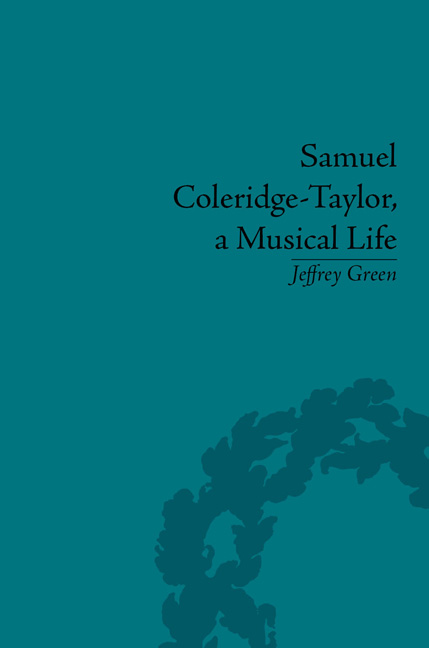Book contents
- Frontmatter
- CONTENTS
- Dedication
- Acknowledgements
- List of Figures
- Introduction
- 1 The Early Years
- 2 The Royal College of Music
- 3 The Promising Young Composer
- 4 The Wedding Feast
- 5 ‘A Sentiment Prevalent Here’
- 6 Intensifying the Effect
- 7 The International Star
- 8 A Stalwart Member of the Profession
- 9 A ‘Definite Place for the Negro in the World's History’
- 10 A Tale of Old Japan
- 11 Requiem
- 12 The Legacy
- Postscript
- Appendix 1 The Song of Hiawatha
- Appendix 2 Further Reading
- Notes
- Works Cited
- Index
12 - The Legacy
- Frontmatter
- CONTENTS
- Dedication
- Acknowledgements
- List of Figures
- Introduction
- 1 The Early Years
- 2 The Royal College of Music
- 3 The Promising Young Composer
- 4 The Wedding Feast
- 5 ‘A Sentiment Prevalent Here’
- 6 Intensifying the Effect
- 7 The International Star
- 8 A Stalwart Member of the Profession
- 9 A ‘Definite Place for the Negro in the World's History’
- 10 A Tale of Old Japan
- 11 Requiem
- 12 The Legacy
- Postscript
- Appendix 1 The Song of Hiawatha
- Appendix 2 Further Reading
- Notes
- Works Cited
- Index
Summary
The deaths of William Hurlstone and now Coleridge-Taylor removed the two composers Charles Stanford and the Royal College of Music had produced. Others acquired fame – notably Holst and Vaughan Williams – but not at this time. In 1913 Stanford wrote to the musical press to explain why Coleridge-Taylor had not become rich through the Hiawatha trilogy. There was a lengthy piece in the Musical News on 22 March 1913. Novello defended their contract saying they had made ex-gratia payments including £100 paid to Jessie so she could purchase the house. However, the widow and her son continued to be ‘a frequent source of embarrassment’. Her complaints in 1921 led the board of Novello to minute that it was not prepared to create royalties on works purchased outright; but they sent her £300. Four years later the board ignored a protest letter in The Times.
Croydon librarian William Berwick Sayers, friend of the composer, was asked by Jessie to write a biography of her husband and his 325-page book was published by Cassell in 1915. Colleges and teachers awarded copies to pupils over the years. Interest in the man and his music continued so Augener republished the book in 1927, from new plates – addresses on quoted letters were omitted. Sayers shared the royalties with the widow. This was the standardsource for information about Coleridge-Taylor for decades.
- Type
- Chapter
- Information
- Samuel Coleridge-TaylorA Musical Life, pp. 213 - 220Publisher: Pickering & ChattoFirst published in: 2014



